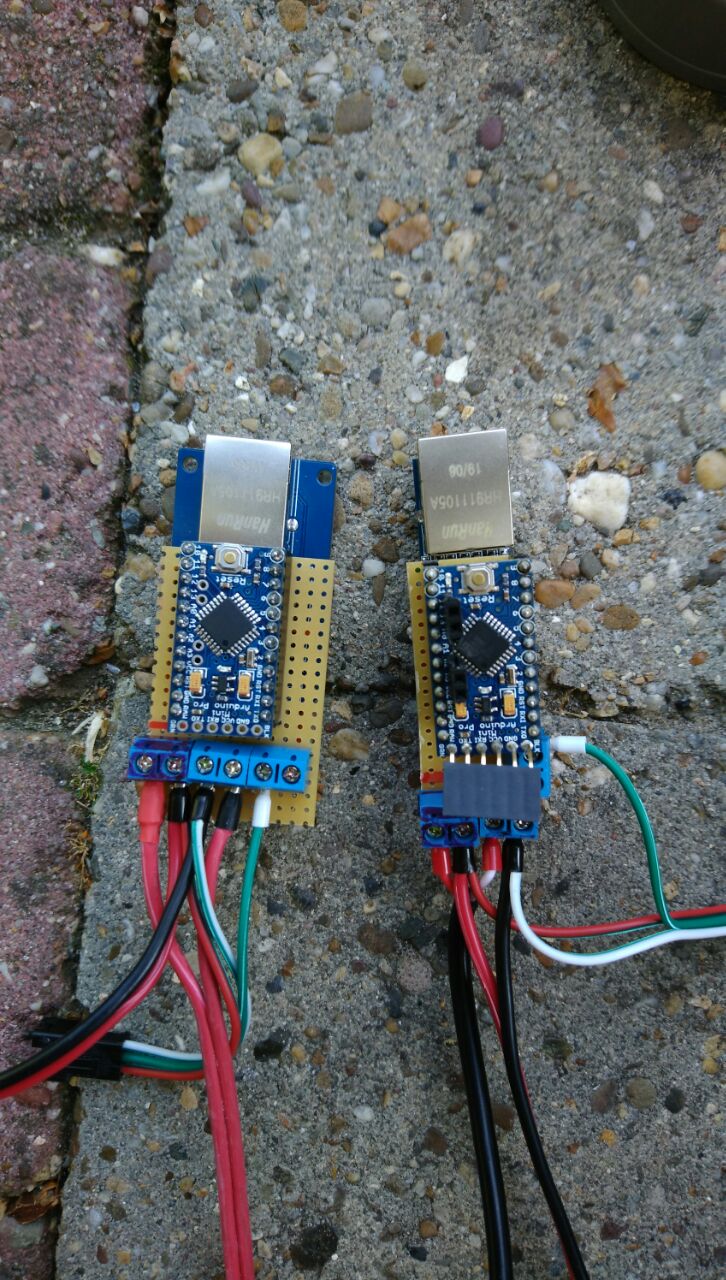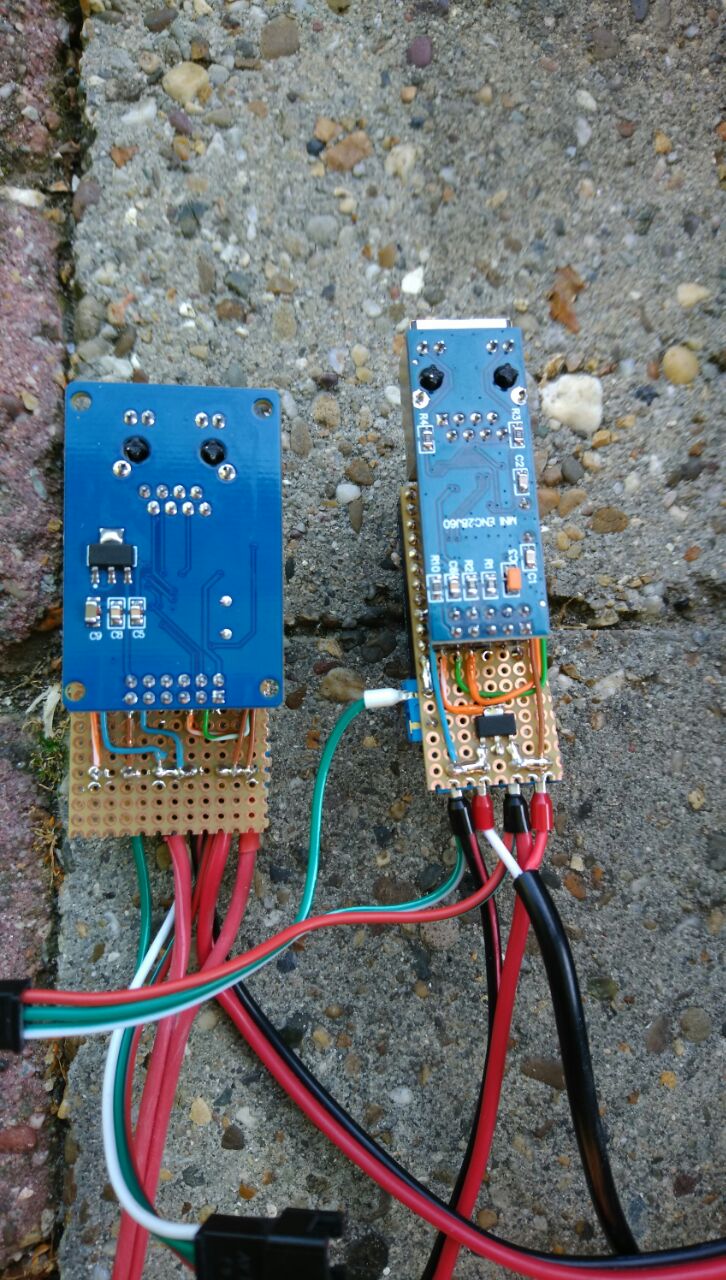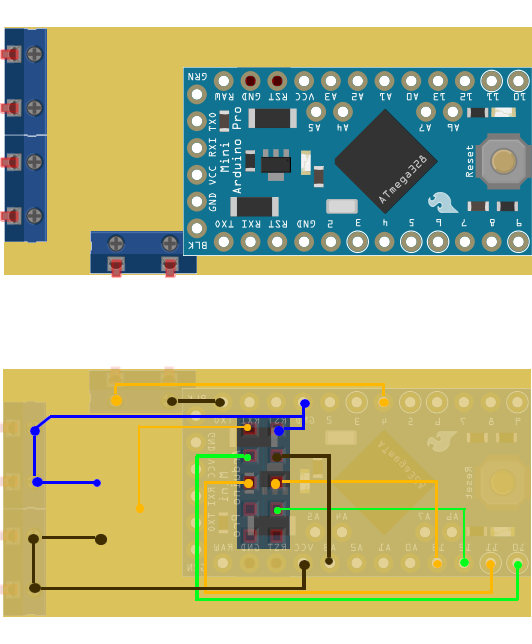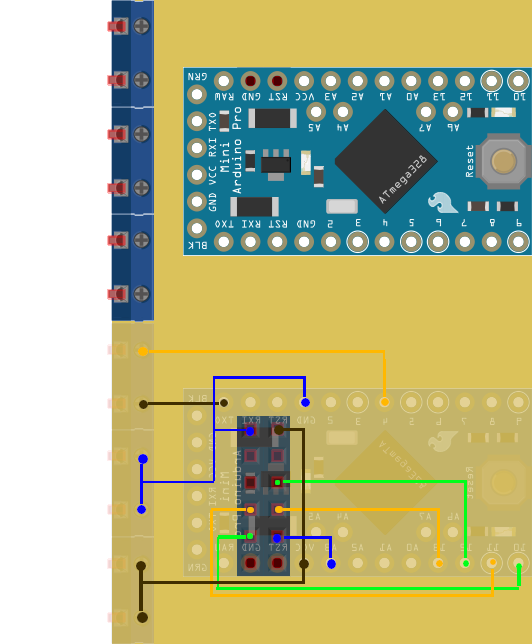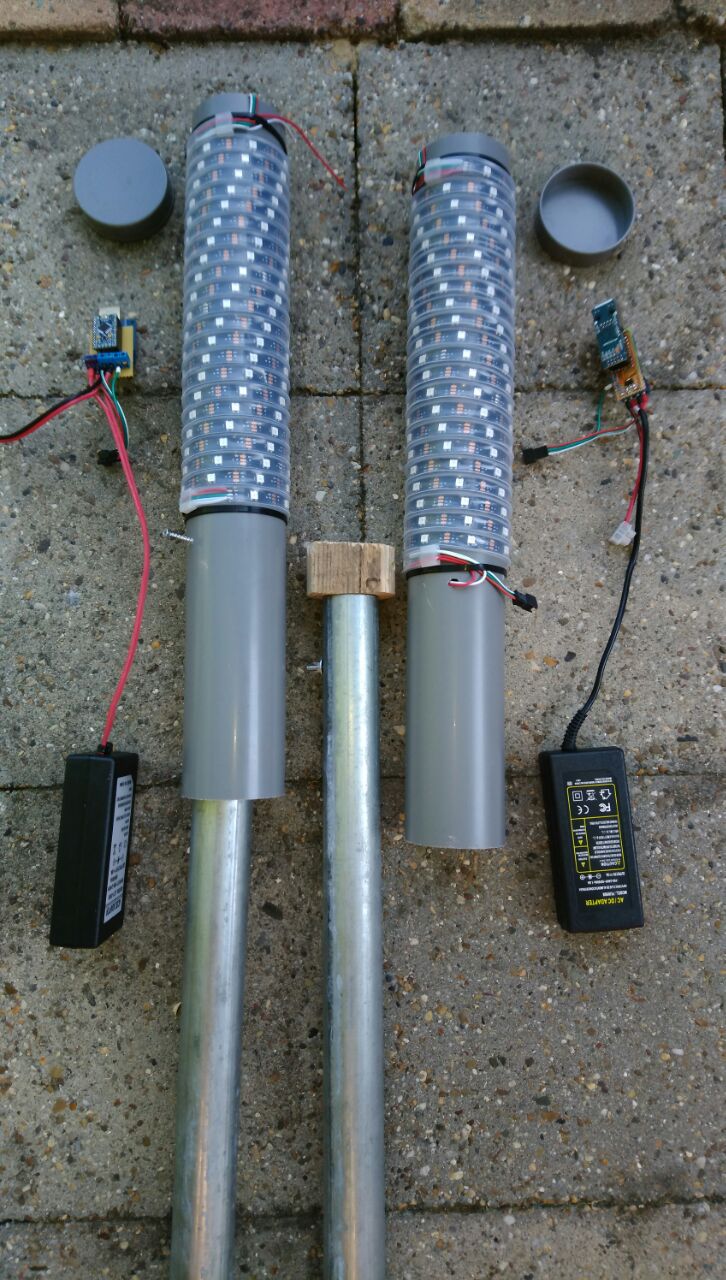Difference between revisions of "LED sleeve"
m (Added some retard posing for a bunch of LEDs) |
(added correct strip winding direction) |
||
| Line 54: | Line 54: | ||
Some important notes: | Some important notes: | ||
| + | * The correct winding is top to bottom, clockwise (seen from the top, i.e.: from top right to bottom left) | ||
* I had old Arduino pro minis with old bootloaders that needed some extra work | * I had old Arduino pro minis with old bootloaders that needed some extra work | ||
* Make sure you don't use other diameter pipes (like 75mm drain pipes) or your image will be garbled | * Make sure you don't use other diameter pipes (like 75mm drain pipes) or your image will be garbled | ||
| Line 61: | Line 62: | ||
* the Arduino libraries can be a pain to find and/or get working. YMMV. | * the Arduino libraries can be a pain to find and/or get working. YMMV. | ||
* for added safety, crimp your stranded wires; it's not worth risking fire for a couple of cents extra | * for added safety, crimp your stranded wires; it's not worth risking fire for a couple of cents extra | ||
| − | |||
| − | |||
| − | |||
=== also see === | === also see === | ||
Revision as of 13:05, 16 March 2021
| Project: LED sleeve | |
|---|---|
| Featured: | No |
| State | Completed |
| Members | Xopr |
| GitHub | No GitHub project defined. Add your project here. |
| Description | ART-net controlled cylindrical-ish display |
| Picture | |
| No project picture! Fill in form Picture or Upload a jpeg here | |
Contents
synopsis
LED sleeve, also known as OHM2017 torch is a project xopr wanted to do a long time, so at one blue Monday in the summer of 2020, he decided to just build one (two actually).
I didn't want to take the trouble to order descent PCBs so I piggybacked an ENC28J60 module to an Arduino pro mini (that's all there is to, actually).
build
The list you need to build one:
- 1 Ledstrip WS2812 5m30L/m
- 1 Arduino pro mini (5V)
- 1 ENC28J60 or ENC28J60 mini with a separate LM1117 regulator
- 1 power supply 5V8A (laptop PSU form factor)
- 1 prototype PCB 13x16 or 8x20 holes (wide v.s. narrow/mini)
- 3x2 screw terminals
- 1 header 2x6/2x5 (for ENC28J60 regular v.s. mini)
- 33cm rainwater drainage (HWA or "hemelwaterafvoer") tube 70mm
- 1 lid 70mm
- 4 wire crimp terminal 1.5mm (recommended)
- 1 or 2 wire crimp terminal 0.5mm or 0.75mm (recommended)
- 0.4m cable 2x0.75mm
- 1 wooden base ~70mm diameter
- 2 large zip ties (to fix the LED strip)
- 3 or 4 wood screws (for the base)
- 1 network cable
- 1 power cable
- 10cm shrink wrap (recommended)
- 2/12th paired screw terminals (recommended)
- 1/4th thick broom stick with a large screw (optional)
- flag pole holder (optional)
The PCB is just a connector between ENC28J60 and Arduino (AVR)
notes
The cost per led sleeve is between €35,- and €85,- depending on your sources (local/ebay/scrap).
Some important notes:
- The correct winding is top to bottom, clockwise (seen from the top, i.e.: from top right to bottom left)
- I had old Arduino pro minis with old bootloaders that needed some extra work
- Make sure you don't use other diameter pipes (like 75mm drain pipes) or your image will be garbled
- to solder the headers on the solder side, you have to offset them from the PCB (I used scrap plastic from zip ties)
- the power supplies on ebay are very dubious! They are refurbished (sloppy) and given the wire gauge I strongly doubt the were built for 8A continuous use. Don't leave them unattended
- feed the ledstrip from both sides to prevent discoloration
- the Arduino libraries can be a pain to find and/or get working. YMMV.
- for added safety, crimp your stranded wires; it's not worth risking fire for a couple of cents extra

